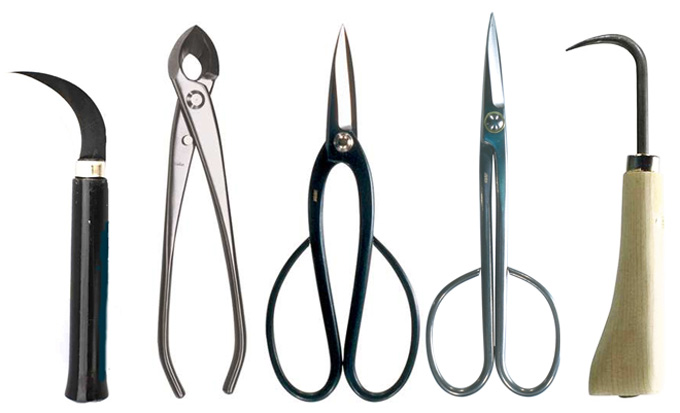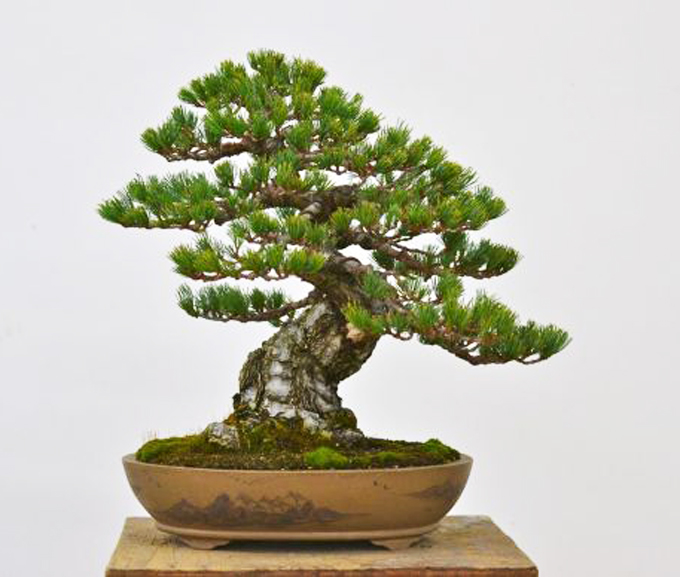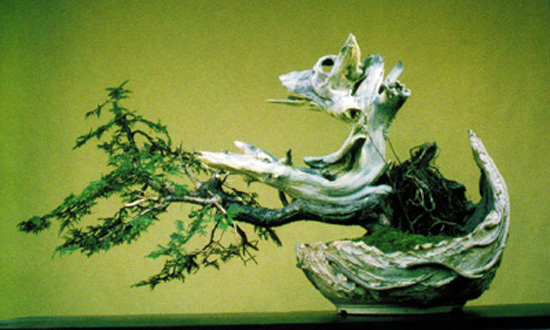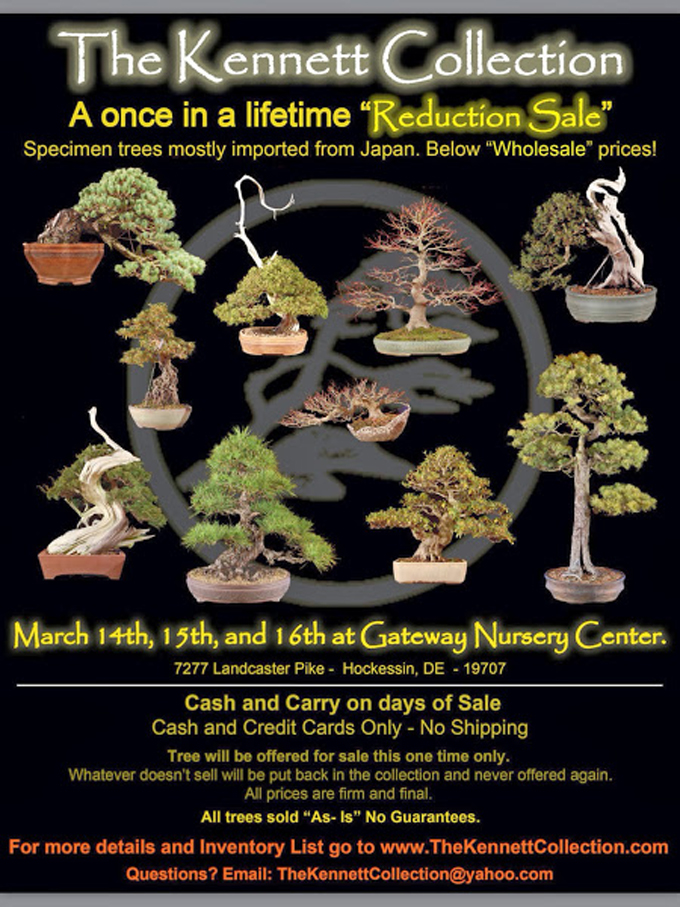 This looks good. The Kennett Collection is one of the most famous privately owned bonsai collections in North America. My guess is there will be some very good bonsai offered.
This looks good. The Kennett Collection is one of the most famous privately owned bonsai collections in North America. My guess is there will be some very good bonsai offered.
Shed Some Light & Win a 25.00 Gift
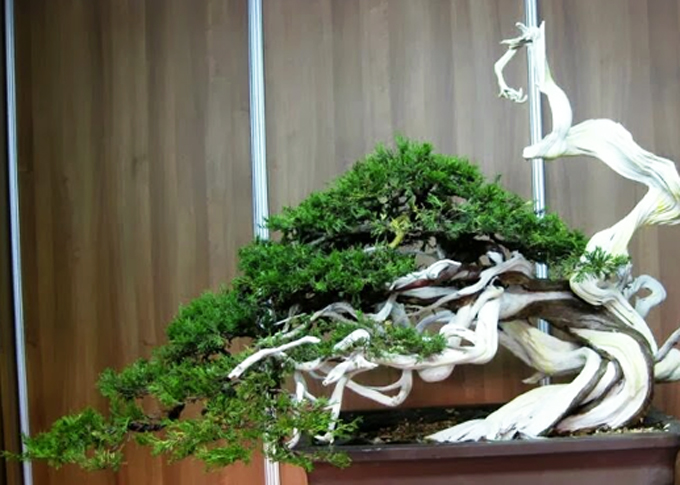 Cropped photo of an amazing Sabina juniper (uncropped version below). It’s from KINGII blogspot.
Cropped photo of an amazing Sabina juniper (uncropped version below). It’s from KINGII blogspot.
Here’s the Spanish caption
Nombre de esta sabina rastrera de Luis, se le puso tras el primer modelado, ya que la primera rama era tan amplia que parecía una bandeja.
Nunca había salido en ningún lado, asñiq ue se puede considerar una presentación en sociedad, a pesar de que lleva unos 5 años en casa.
Here’s how you can win a 25.00 Stone Lantern gift certificate
Be the first person to send a sensible translation of the Spanish above (in perfect or near perfect English). Don’t put your translation in the comments! Send it to me wayne@stonelantern.com and I’ll announce the winner as soon as we have one.
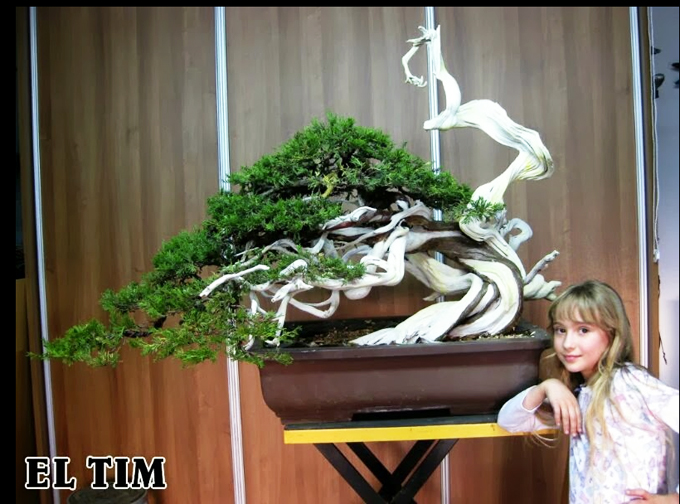 Here’s the uncropped original. It’s a sweet photo and better than the one above. It’s just that we choose to focus on bonsai rather than people, so for the sake of consistency, we’ll stick to bonsai only for our lead photos. El Tim is another blog that seems to have some relationship to the KINGII blog. We featured El Tim on Bark back in 2012.
Here’s the uncropped original. It’s a sweet photo and better than the one above. It’s just that we choose to focus on bonsai rather than people, so for the sake of consistency, we’ll stick to bonsai only for our lead photos. El Tim is another blog that seems to have some relationship to the KINGII blog. We featured El Tim on Bark back in 2012.
We’re having a Big Sale at Stone Lantern. We just put over 200 items on sale. Almost all of our regular prices are discounted, so our sale prices are very deeply discounted.
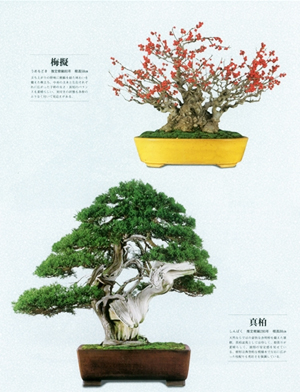 Our beautiful Japanese 2014 Bonsai Calendars are now only 8.00 each. Most of this year is still in front of us, and the bonsai are never out of date. Get yours before we run out.
Our beautiful Japanese 2014 Bonsai Calendars are now only 8.00 each. Most of this year is still in front of us, and the bonsai are never out of date. Get yours before we run out.
The Last Day!
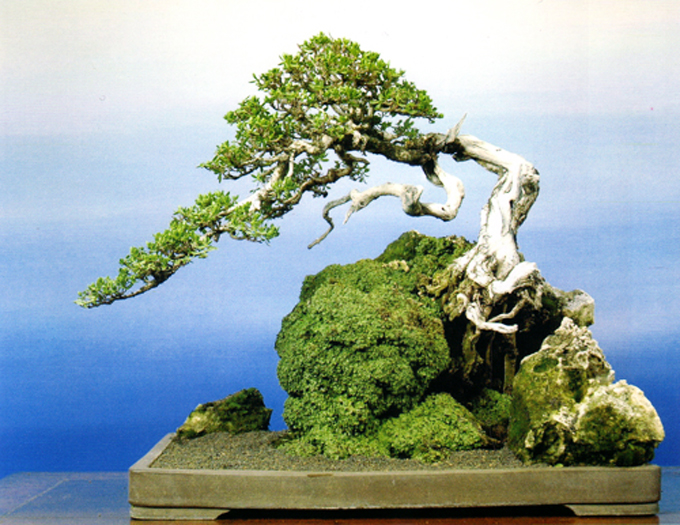 This perfect Pemphis acidula by Robert Steven doesn’t have much to do with the last day of our Big Winter Sale. Except that Robert’s excellent book, Mission of Transformation is one of the items you can save on (the photo originally appeared in a Bark post way back in 2009).
This perfect Pemphis acidula by Robert Steven doesn’t have much to do with the last day of our Big Winter Sale. Except that Robert’s excellent book, Mission of Transformation is one of the items you can save on (the photo originally appeared in a Bark post way back in 2009).
Our Big Winter Sale is running out of time. Today is the last day to save 20% to 25% on everything we offer at Stone Lantern.
Just in case you’re one of those people who reads this blog but never visits our Stone Lantern website, you should know that we have a wide range of bonsai products: bonsai tools, bonsai books, bonsai wire, bonsai pots, bonsai fertilizers and soil, Bonsai Today magazines, bonsai clothing, other bonsai accessories, and, as an bonus, Japanese gardening tools and books, and deeply discounted netsuke (and more).
Tough As Nails – Cedar Bonsai #5
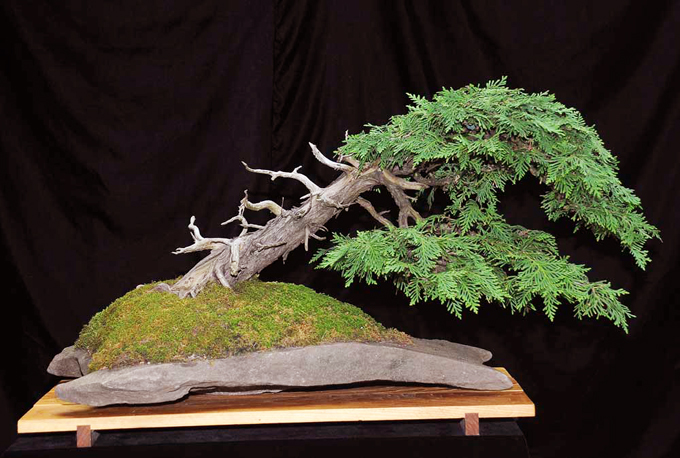 Not a great tree, but a good tree (I’d happily add it to my collection) that provides an excellent look at the beauty of Northern white cedar foliage (see below for a close-up). This type cedar often grows at the water’s edge, so you might imagine that this one is leaning out over a pond or river. You might also imagine that years of heavy snow have weighed it down. It’s a member’s tree at The Bonsai Society at Royal Botanical Gardens, in Burlington, Ontario.
Not a great tree, but a good tree (I’d happily add it to my collection) that provides an excellent look at the beauty of Northern white cedar foliage (see below for a close-up). This type cedar often grows at the water’s edge, so you might imagine that this one is leaning out over a pond or river. You might also imagine that years of heavy snow have weighed it down. It’s a member’s tree at The Bonsai Society at Royal Botanical Gardens, in Burlington, Ontario.
In keeping with our Cedar theme (true cedars and cedars in name only), here’s a peek at a couple less dramatic but worthy examples of our Northern white cedar. Both of which, in addition to other things, provide a pretty good look at cedar foliage and bark. BTW, when we say cedar in this case, we’re referring to that genus of trees that is more accurately called Arborvitae (aka Thuja).
On a personal note, I must confess to my love of our native cedars, great and humble. In fact, if it weren’t for the natural beauty of our cedars here in northern Vermont, our gorgeous landscape would be diminished. Beyond that, our Northern white cedar makes for great bonsai. They are tough as nails, and though it is possible to kill them through barbaric handling or neglect (sadly I know first hand), still, they don’t give up all that easily.
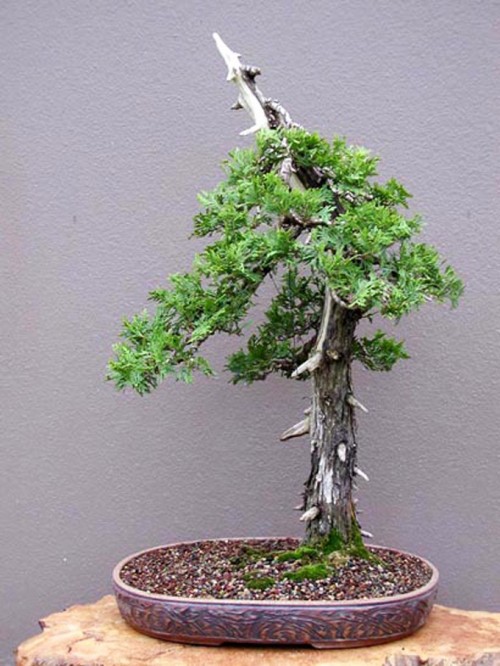 Like the one above, this one is not as dramatic as some Cedars, but I like its rugged simplicity. And then there’s that luscious pot. You might notice that the foliage looks a little rougher than the foliage on the tree above (and below). Northern white cedars display considerable foliage variation, often on a single tree. The tree and the pot are by Sara Rayner. The photo is from an old post about Sara’s bonsai and pots at the Art of Bonsai Project.
Like the one above, this one is not as dramatic as some Cedars, but I like its rugged simplicity. And then there’s that luscious pot. You might notice that the foliage looks a little rougher than the foliage on the tree above (and below). Northern white cedars display considerable foliage variation, often on a single tree. The tree and the pot are by Sara Rayner. The photo is from an old post about Sara’s bonsai and pots at the Art of Bonsai Project.
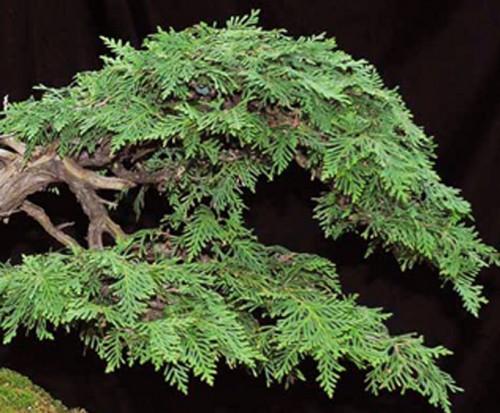 Northern white cedar foliage close up (from the photo at the top). It looks suspiciously like Western red cedar foliage (see below), but it isn’t. Our Northern white cedar foliage varies from tree to tree and often on a single tree.
Northern white cedar foliage close up (from the photo at the top). It looks suspiciously like Western red cedar foliage (see below), but it isn’t. Our Northern white cedar foliage varies from tree to tree and often on a single tree.
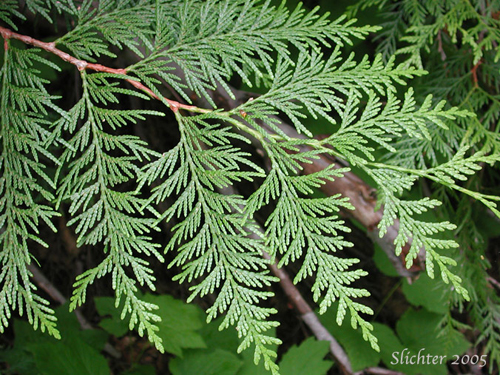 Western red cedar (Thuja plicata) foliage. It’s a little more feathery and delicate than our Northern white ceder’s foliage, though in some cases they can be quite similar. Another notable difference is size. Western red cedars are towering trees, while our Northern whites are much more humble in size.
Western red cedar (Thuja plicata) foliage. It’s a little more feathery and delicate than our Northern white ceder’s foliage, though in some cases they can be quite similar. Another notable difference is size. Western red cedars are towering trees, while our Northern whites are much more humble in size.
If I Had A Complaint…
After. Choosing Branches for Flow- is Michael Hagedorn’s title for his latest post which features this extraordinary Japanese white pine.
If I had a complaint about Crataegus Bonsai, it would be that Michael doesn’t post often enough. But I really don’t have a complaint, because: 1. Michael has a whole bonsai nursery to run, classes and tutorials to teach, a travel schedule to keep and maybe even a life (who knows?). And 2. When he does post, it’s always something worth my time.
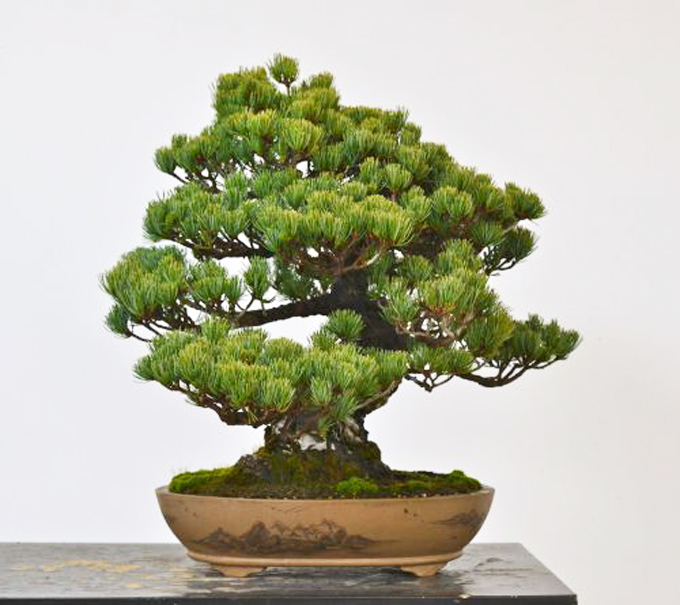 Before. For what happens between before and after you can visit Crataegus Bonsai.
Before. For what happens between before and after you can visit Crataegus Bonsai.
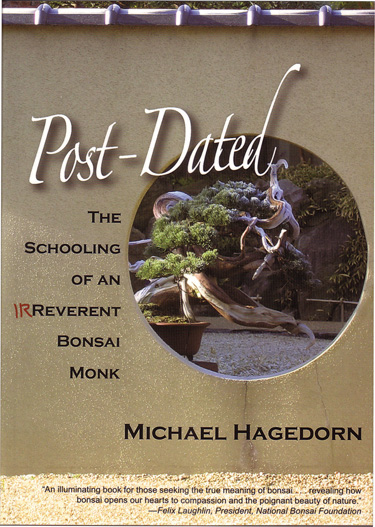 While we’re at it, Michael’s book is still the best bonsai read around.
While we’re at it, Michael’s book is still the best bonsai read around.
Cedar IV – True & Untrue
 A later iteration of a Northern white cedar (Thuja Occidentalis) that we featured last year (see below). The tree’s potential has moved closer to realization (even with the photo’s missing top and right side). It belongs to Paul Chong. Both photos are originally from Lakeshore Bonsai, Toronto.
A later iteration of a Northern white cedar (Thuja Occidentalis) that we featured last year (see below). The tree’s potential has moved closer to realization (even with the photo’s missing top and right side). It belongs to Paul Chong. Both photos are originally from Lakeshore Bonsai, Toronto.
Keeping with our Cedar theme, here’s a good one that we’ve featured before (below). The later version (above) shows improvements worthy of bonsai artist with a sharp eye and a sure touch. It falls into the ‘untrue’ cedar category (Cedrus are true cedars and this one is a Thuja or Arborvitae). Just in case you’re interested in such fine points.
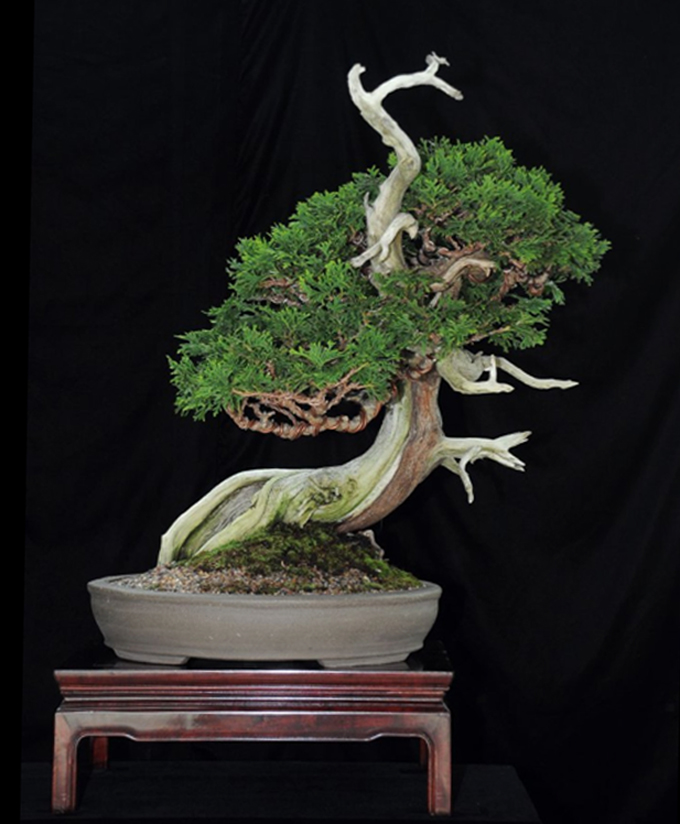 An earlier stage in the tree’s development that’s full of character and potential. This photo is borrowed from our March 8th, 2013 Bark post. The tree belongs to Paul Chong, whose cedar bonsai have been featured several times here on Bark (including a particularly powerful one that has been shown at least twice, the most recent from just the other day).
An earlier stage in the tree’s development that’s full of character and potential. This photo is borrowed from our March 8th, 2013 Bark post. The tree belongs to Paul Chong, whose cedar bonsai have been featured several times here on Bark (including a particularly powerful one that has been shown at least twice, the most recent from just the other day).
Sticking with Our Cedar Theme
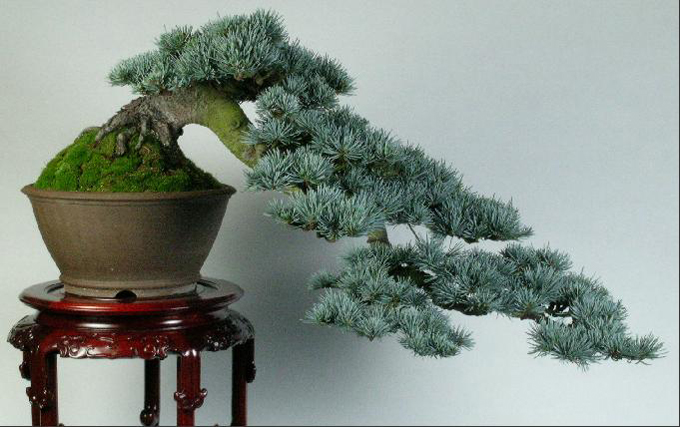 Jim Gremel had a Blue Atlas Cedar (Cedrus atlantica – one of the handful of true Cedars) that looked a lot like this one at the 2012 U.S. National Bonsai Exhibition.
Jim Gremel had a Blue Atlas Cedar (Cedrus atlantica – one of the handful of true Cedars) that looked a lot like this one at the 2012 U.S. National Bonsai Exhibition.
Winging to Boston and then driving back to the ice palace today (from sunny SF), so let’s indulge in one more foray into the archives. We’ll stick with out Cedar theme while we’re at it. This one was titled Real Cedar Bonsai & A Good Neighbor (June, 2012).
Deer Meadow Bonsai & the 3rd U.S. National Bonsai Exhibition
Some of the trees that were offered for sale at the 3rd National were every bit as good as some of the trees in the display area.
One of my favorite vendors at the show was Jim Gremel (Deer Meadow Bonsai). Not only did Jim go to the trouble of coming all the way from Northern California, but he was a close neighbor of mine in the vendor section (I don’t usually write much about personality in this blog, but there’s something about Jim’s straightforward manner and sense of humor that I liked).
I was also impressed with Jim’s trees, including one that looked a lot like the one above (was it the same tree?). He didn’t bring many, but traffic around his display was strong throughout the show and he left with a lot fewer than he brought (I wasn’t going to mention the popularity of his annealed copper bonsai wire because we are now offering annealed copper wire, but there’s plenty of room in our bonsai world and it provides an opportunity to sneak in a link, so why not?)
Now, if we can find some good photos of Suthin’s trees… (Note: Suthin Sukosolvisit has since added several excellent photos to his website, so no more complaining on my part).
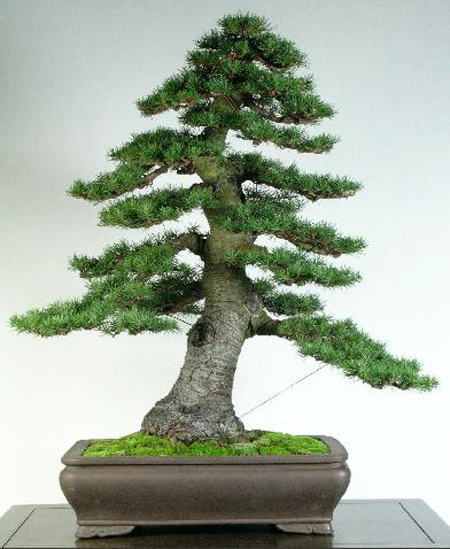 This classic beauty is a Green Atlas Cedar. I’m not sure why some are green and some are blue, but my best guess is that the blue ones are cultivars.
This classic beauty is a Green Atlas Cedar. I’m not sure why some are green and some are blue, but my best guess is that the blue ones are cultivars.
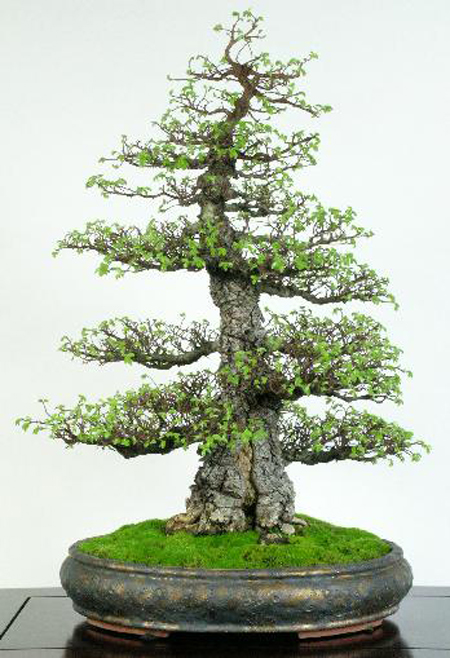 Even though this Cork Elm is a deciduous tree that is shaped like a conifer (there really are no laws that say you can’t do this – however, Robert Steven might have something to say about it). The gnarly old trunk, with its perfect taper, grabbed my attention (like the others shown here, it’s on Jim’s website).
Even though this Cork Elm is a deciduous tree that is shaped like a conifer (there really are no laws that say you can’t do this – however, Robert Steven might have something to say about it). The gnarly old trunk, with its perfect taper, grabbed my attention (like the others shown here, it’s on Jim’s website).
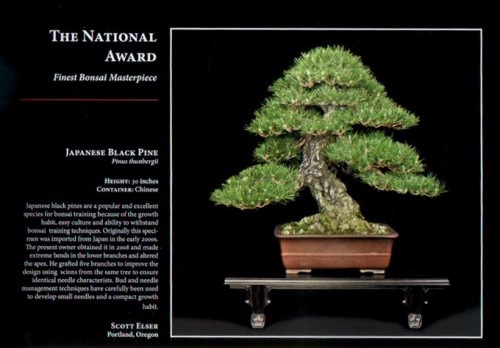 It’s not a Cedar, but it is a spread from the 3rd U.S. National Bonsai Exhibition Album. Now on special at Stone Lantern.
It’s not a Cedar, but it is a spread from the 3rd U.S. National Bonsai Exhibition Album. Now on special at Stone Lantern.
When Is A Cedar?
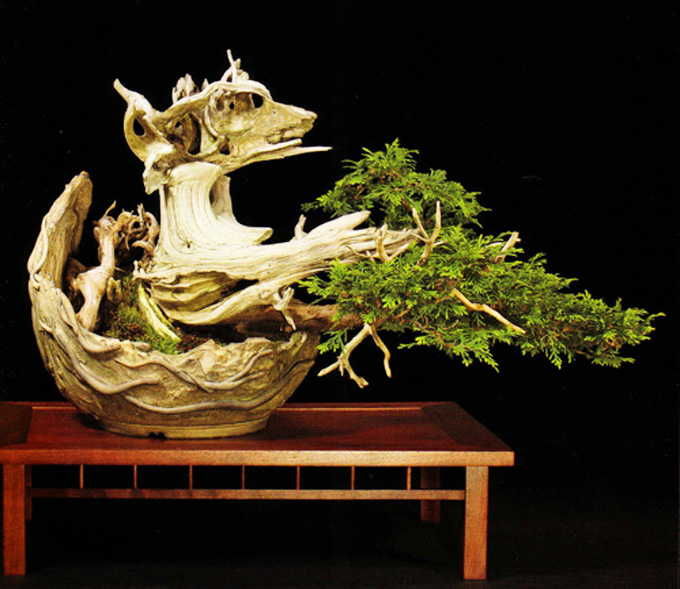 You like unconventional? Crazy? How about daring and masterful? Notice how the color and design of the pot plays with the wild shari (deadwood) and the small touch of moss on the left mirrors the foliage. Just another bonsai from left field by crafty old Nick Lenz, master left fielder, author, and preeminent master of cedars, larches and other collected North American gems. This photo is from North American Bonsai (American Bonsai Society – compiled and edited by Martin Schmalenberg), now on sale at Stone Lantern (that was then – it’s gone now).
You like unconventional? Crazy? How about daring and masterful? Notice how the color and design of the pot plays with the wild shari (deadwood) and the small touch of moss on the left mirrors the foliage. Just another bonsai from left field by crafty old Nick Lenz, master left fielder, author, and preeminent master of cedars, larches and other collected North American gems. This photo is from North American Bonsai (American Bonsai Society – compiled and edited by Martin Schmalenberg), now on sale at Stone Lantern (that was then – it’s gone now).
I’m not really on vacation all the time (it just seems that way). Still, when I travel for vacation or otherwise, I like to use our Bark archives. It frees me to do other things, like babysit or maybe walk on the beach (it’s scarily sunny and warm here in SF). In this case I’ve combined photos from three previous Bark posts, which requires more work on my part (just in case you think I’m getting lazy) and provides value added for you.
The photo above and text below are from Eccentric Bonsai #8, Nick’s Crafty Cedar, Dec, 2009.
When is a cedar not really a cedar?
The tree featured here is commonly called a Northern (or Eastern) white cedar, when in fact it’s actually a variety of Arborvitae (botanical name; Thuja occidentalis). Lots of trees that aren’t cedars are called cedars, including at least one juniper (Eastern red cedar; Juniperus virginiana), one false cypress (Atlantic white cedar; Chamaecyparis thyoides), the California Incense cedar (Calocedrus decurrens), Japanese cedar (Cryptomeria japonica) and no doubt others. What most of these share is fan shaped foliage. Interestingly, true cedars (Cedrus) don’t have fan shaped foliage. Confused? You’re not alone.
When is a cedar a really cedar?
There are a handful of true cedars (Cedrus) in the world, the best known of which are: the Deodar cedar (C. deodara) from the Himalayas, and two from the Mediterranean: the Lebanon cedar (C. libani) and the Atlas cedar (C, atlantica).
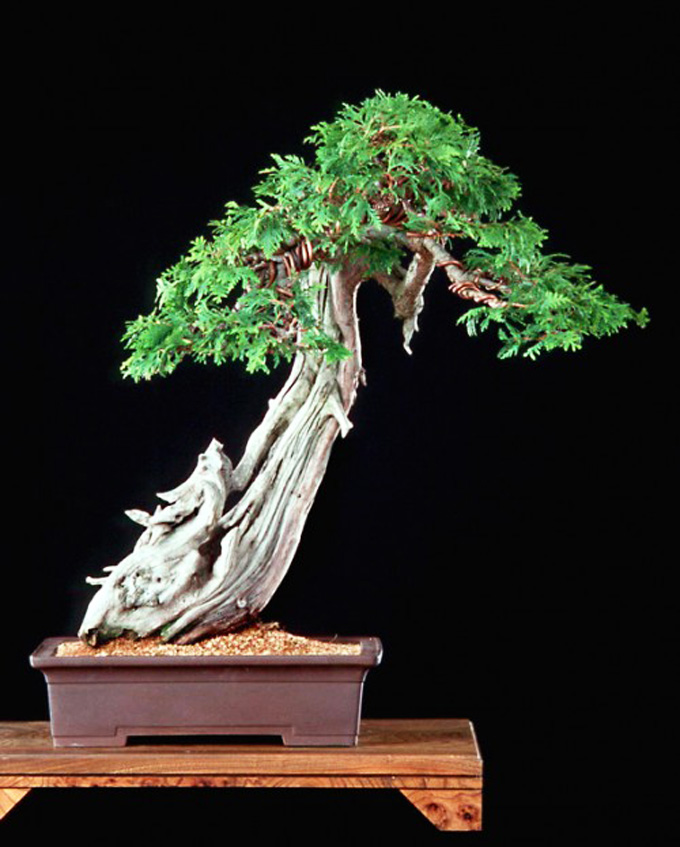 Northern white cedar (Thuja Occidentalis) by Paul Chong of the Toronto Bonsai Society. This photo originally appeared in post titled: More Cedars from Our Friends Up North (August, 2010).
Northern white cedar (Thuja Occidentalis) by Paul Chong of the Toronto Bonsai Society. This photo originally appeared in post titled: More Cedars from Our Friends Up North (August, 2010).
An earlier (less professional) photo of the tree at the top. You can find this one in Nick’s excellent book on collecting bonsai, Bonsai from the Wild (Stone Lantern Publishing).
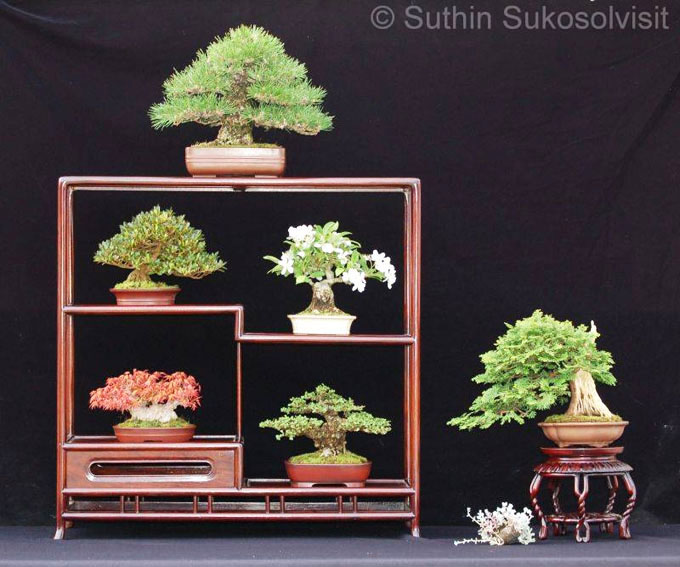 That’s a Cedar on the right. As you can see, it and the other trees in this photo are by Suthin Sukosolvisit. From a post titled Much More Than Just Shohin (Feb 2012).
That’s a Cedar on the right. As you can see, it and the other trees in this photo are by Suthin Sukosolvisit. From a post titled Much More Than Just Shohin (Feb 2012).
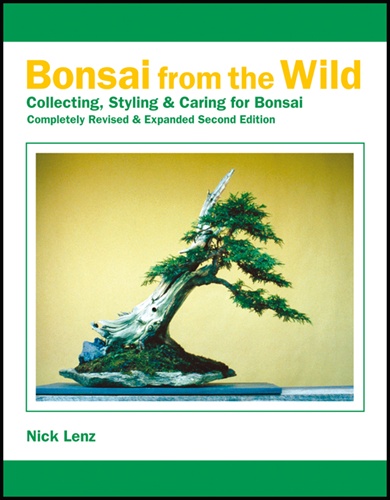 The true standard on collecting. Now deeply discounted at Stone Lantern. Actually very deeply discounted given our 20% to 25% sale off of everything.
The true standard on collecting. Now deeply discounted at Stone Lantern. Actually very deeply discounted given our 20% to 25% sale off of everything.
Japanese Cedar, Few and Far Between
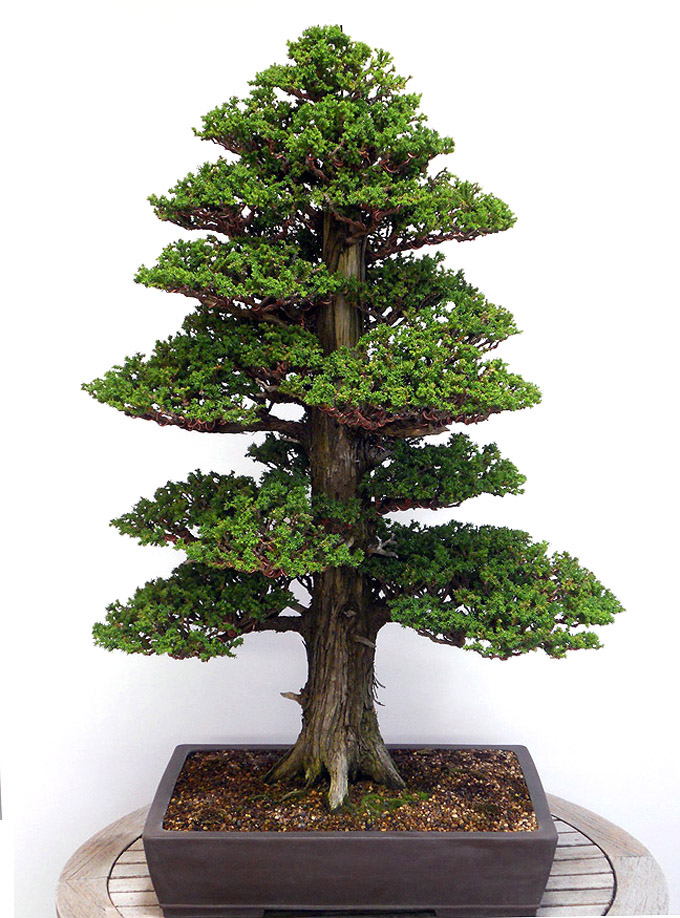 This Cryptomeria japonica is reminiscent of the unimaginably vast and towering Giant sequoias in California’s Sierra Nevada. This effect could be enhanced by photographing it from a little lower (see the photo below), but you still get the drift.
This Cryptomeria japonica is reminiscent of the unimaginably vast and towering Giant sequoias in California’s Sierra Nevada. This effect could be enhanced by photographing it from a little lower (see the photo below), but you still get the drift.
Still on a vacation of sorts, so we’ll continue our archival adventures. This one was originally titled Quiet Dignity (July, 2011).
Far and few between What a great tree. It’s from Michael Hagedorn’s Crataegus Bonsai. You seldom see a real good formal upright bonsai (you don’t see very many formal uprights at all) and you don’t see many good Cryptomeria bonsai either. Especially in the West; they are more common in Japan (their common name in English is Japanese cedar, even though they’re not really cedars; they are from Japan however).
In Michael’s own words “This cryptomeria was one of the standout trees in Boon’s backyard when I studied with him ten years ago. He’s been maintaining it for years. It was originally styled by Mitsuya during one of his visits to the states in the early ’90?s, and is the most significant cryptomeria I’ve seen in the United States. It’s about a meter tall, and has been developing as a bonsai for about twenty years….” For the whole story, visit Crataegus Bonsai. 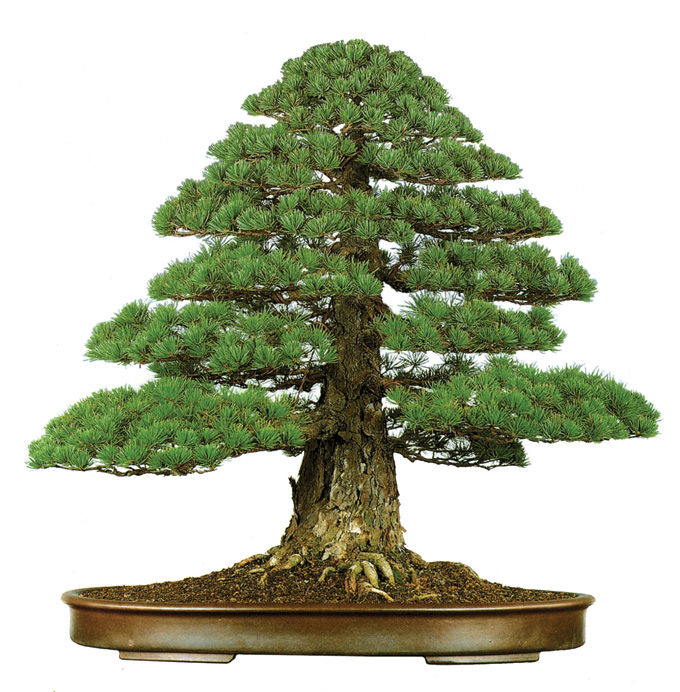 Another dignified formal upright. The one is a legendary Japanese white pine (perhaps the most famous formal upright bonsai in the world). If was restyled by Masahiko Kimura (The Magician) just before this photo was taken in 1997. It appears in our book: Pines, Growing and Styling Japanese Black and White Pines (available at Stone Lantern).
Another dignified formal upright. The one is a legendary Japanese white pine (perhaps the most famous formal upright bonsai in the world). If was restyled by Masahiko Kimura (The Magician) just before this photo was taken in 1997. It appears in our book: Pines, Growing and Styling Japanese Black and White Pines (available at Stone Lantern).
20% to 25% off everything. This is a particularly good time to visit Stone Lantern. Sale ends January 31, 2014.
Wild & Wonderful Bonsai but No Rain in California
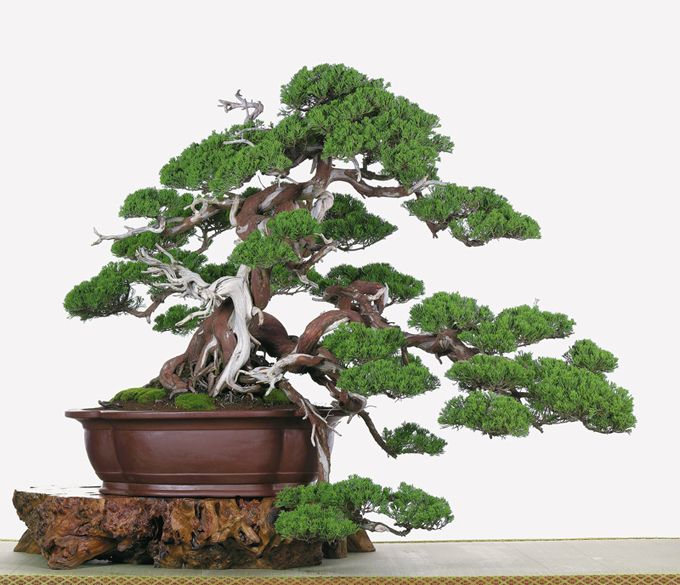 Wild! There’s so much going on with this delightfully crazy tree, that you could spend a long time looking at it and still see something new. It’s a Chinese juniper by Yang Hsui.
Wild! There’s so much going on with this delightfully crazy tree, that you could spend a long time looking at it and still see something new. It’s a Chinese juniper by Yang Hsui.
Yesterday I flew from snowy Boston to sunny San Francisco. I mention this because we flew over the Sierra Nevada, California’s magnificent mountain range, which, in the winter always appears as an endless chain of white from north to south, as far as the eye can see. Only this time no white. Just dark green, brown and other earth colors.
California and much of the west has been dry for three years now. The reserviors are near empty and San Francisco is a sunny 70, day in and day out. This is nice for someone who just escaped from another cold grey Vermont winter, but not good for California. If the drought persists, it can only go from not good, to worse.
Because I’m traveling once again, we’re back to our journey through our archives. And because our last post took us to Taiwan, we might as well stay there for now. The original appeared in April, 2011.
Taiwanese Bonsai
The three bonsai shown here are all from the 2008 Taiwan Bonsai Creators Exhibition booklet which appears on Bonsai Shari Si-Diao, Cheng, Cheng-Kung’s website. Cheng is one Taiwan’s most famous, and most innovative, bonsai artists and teachers.
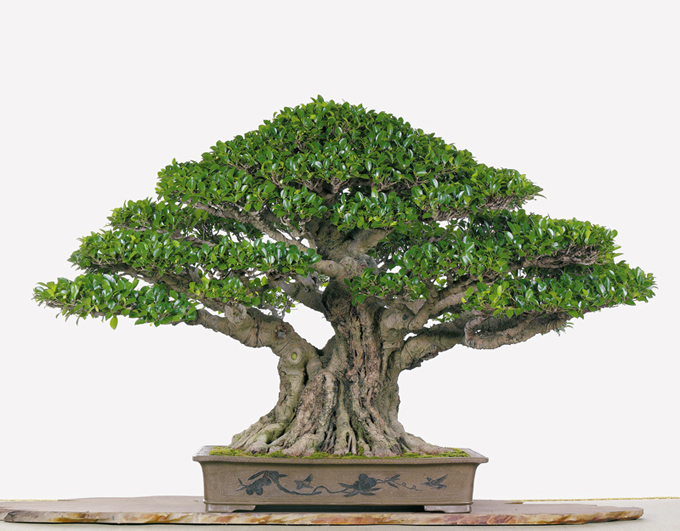 This one is more wonderful than wild. But take a look at the size of the pot relative to the tree and particularly the trunk. Could the tree really stay in that pot? I suspect it’s it just for show and soon it will go back into a larger container. The texture of the trunk is interesting too. Looks kinda like termites got into in. It’s a Ficus microcarpa by Hsieh, Shun-Chin.
This one is more wonderful than wild. But take a look at the size of the pot relative to the tree and particularly the trunk. Could the tree really stay in that pot? I suspect it’s it just for show and soon it will go back into a larger container. The texture of the trunk is interesting too. Looks kinda like termites got into in. It’s a Ficus microcarpa by Hsieh, Shun-Chin.
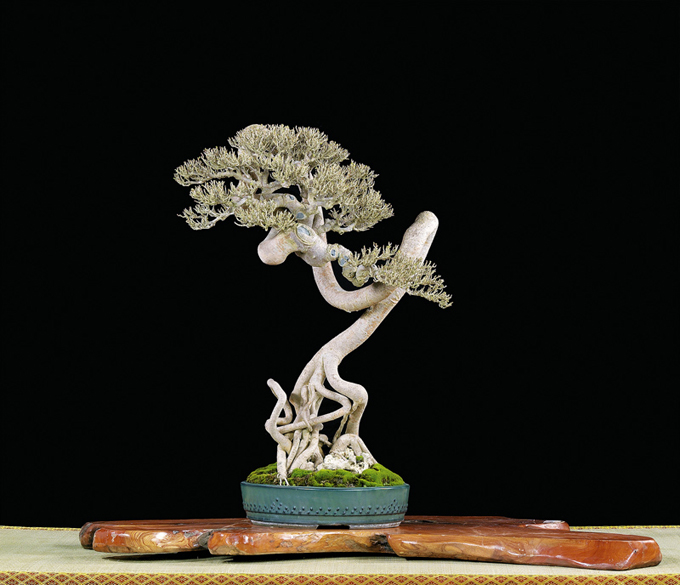 Wild and eccentric. I wonder if this tree was influenced by calligraphy? Certain Chinese bonsai styles use calligraphy as inspiration. Hibiscus tiliaceus by Chien, Yuen-Kui.
Wild and eccentric. I wonder if this tree was influenced by calligraphy? Certain Chinese bonsai styles use calligraphy as inspiration. Hibiscus tiliaceus by Chien, Yuen-Kui.
